I want to redecorate my historic house
 External redecoration not only improves your house’s appearance but also protects it from the weather, while internal redecoration gives you the opportunity to make the most of original features within your historic home.
External redecoration not only improves your house’s appearance but also protects it from the weather, while internal redecoration gives you the opportunity to make the most of original features within your historic home.
If your home is listed or in a conservation area you should seek advice before making changes as consent may be required.
 External decoration can protect your building
External decoration can protect your building
Regular redecoration of the outside is important as it helps prevent decay. This is especially true for external woodwork. Windows and doors need regular painting to protect the wood from weather. The only exception is old hardwood such as oak, which is best left unpainted but may benefit from oiling or other traditional treatment.
External coatings - for example, lime render and stucco - may need special ‘breathable’ paint such as limewash that protects the material but does not trap moisture in the wall. In old houses, it’s important to let moisture in walls evaporate so that it doesn’t cause damp. Painting brick, stone or concrete walls can create damp problems and modern paint can be almost impossible to remove without causing damage. If your walls are already painted, seek advice. See Finding Professional Help.
Your favourite colour
In most cases the choice of colours for the outside of your house is up to you, although for old buildings you will usually get the most pleasing results by keeping to traditional colours. For example, joinery in older houses was often painted dark brown rather than white. Modern white paints are much brighter and colder than historic whites.
If your house is listed you may need to get permission for external redecoration if this would change the character of the building, for example by painting outside walls if they have never been painted before, or using bright red! In some conservation areas there may be special controls on the colours you can use, so check with your local authority first. If your house is in a terrace there may be a tradition of using different bright colours, or for all houses to match; it’s a good idea to take account of local approaches.
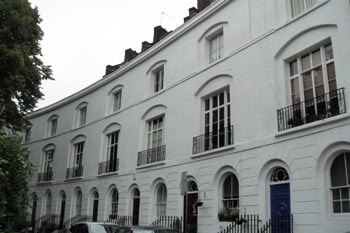
The historic interior of your house
Interior decoration is very much a matter of personal taste, but there are some things that you need to remember. If you live in an old house there may be traces of interesting earlier decoration.
If your house is an important historic building, take extra care with redecoration because there may be layers of old paint that tell the story of the house. There could be unusual wall paintings hidden under later plaster, paint or wallpaper, which need to be kept and may be worth restoring.
If you suspect your house has early wall decoration, you may need specialist advice and conservation, rather than just redecoration. Stripping paint or lime plaster can take away layers of history that can’t be replaced. Painted or stained, rather than bare, woodwork is the norm in most historic houses and in some cases was an important design feature. In such cases stripping these finishes would be damaging.
Try to work with the character of your house, finding out how it would have looked, and making the most of any original decorative features. Original features such as wall-panelling, plaster cornices, picture rails and timber mouldings around doors and windows are valuable and you would need consent to take them out. Some - for example, ornamental plaster ceilings or hardwood panelling - may need special treatment, so look for firms that specialise in restoring or repairing historic interiors.
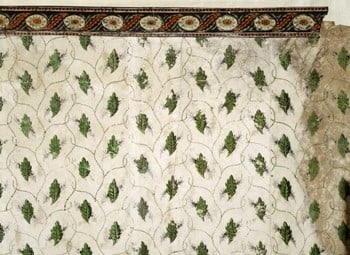
Lead Paint
If your house is Grade I or Grade II* listed it may be appropriate to use traditional paints with white lead pigment or high solvent content. However, their toxicity means they are restricted by environmental legislation and their use permitted only under licence. For more information please read our advice page on Paint Legislation And Historic Buildings.
If you need advice about decorating houses from particular historical periods, the Georgian Group and Victorian Society publish helpful leaflets. These cover timber mouldings, wallpaper and tiles and paint.
Incredible glass restoration project at Grade 1 listed Manchester Town Hall
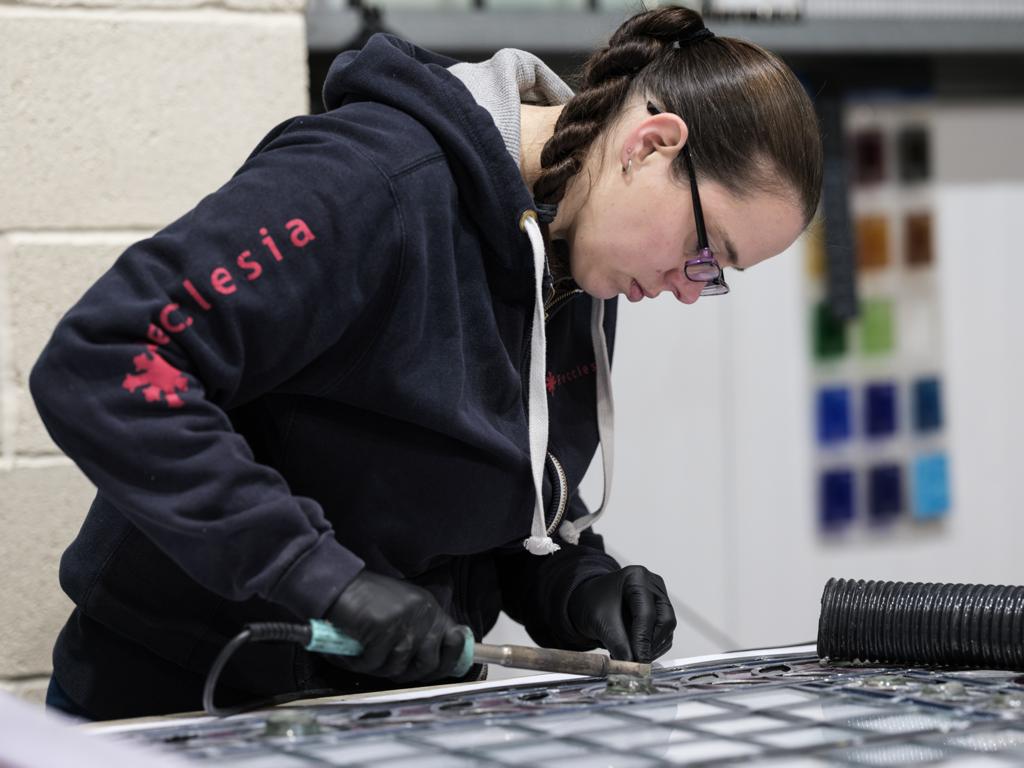 GQA centre Absolute Training Solutions Ltd has contributed to the successful restoration of historic stained glass panels at Grade 1 listed Manchester Town Hall by supporting employees of Recclesia Stained Glass through NVQ attainment. Grade 1 listed buildings, which are incredibly rare in the UK are those deemed to be of exceptional national, architectural or historical significance.
GQA centre Absolute Training Solutions Ltd has contributed to the successful restoration of historic stained glass panels at Grade 1 listed Manchester Town Hall by supporting employees of Recclesia Stained Glass through NVQ attainment. Grade 1 listed buildings, which are incredibly rare in the UK are those deemed to be of exceptional national, architectural or historical significance.
Read more: Incredible glass restoration project at Grade 1 listed Manchester Town Hall
£240,000 boost for communities as Scottish heritage projects awarded funding
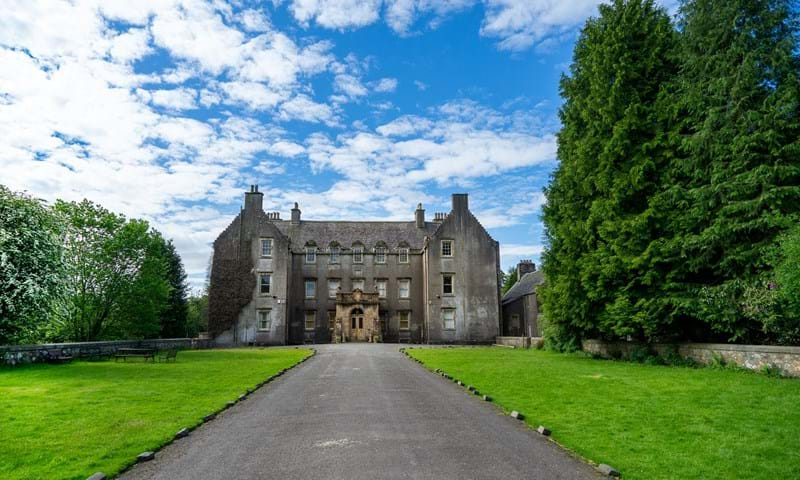 Funding to provide training opportunities and the restoration of historic structures will benefit local communities and economies throughout Scotland.
Funding to provide training opportunities and the restoration of historic structures will benefit local communities and economies throughout Scotland.
A historic Tolbooth steeple in Fife, the B-listed former Govanhill Picture House and a traditional skills training programme targeting disadvantaged people in Perth and Kinross are just some of the latest projects set to benefit from funding from Historic Environment Scotland (HES).
Read more: £240,000 boost for communities as Scottish heritage projects awarded funding
Complex roof tops off an extraordinary restoration
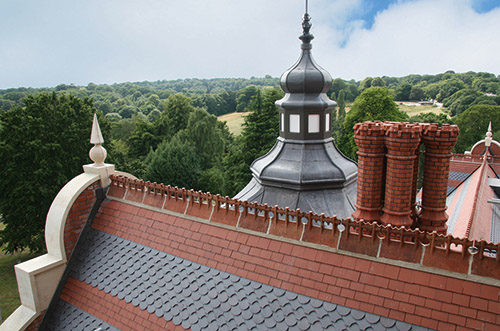 Athlone House is a brick and stone Victorian mansion built in 1871, lying on high ground just beyond the northern edge of Hampstead Heath, within the Highgate Conservation Area. Over its 150-year history the house has been used as a private dwelling, a secret RAF school during World War Two, and more recently an NHS home for people with dementia. From 2003, however, it had been left derelict.
Athlone House is a brick and stone Victorian mansion built in 1871, lying on high ground just beyond the northern edge of Hampstead Heath, within the Highgate Conservation Area. Over its 150-year history the house has been used as a private dwelling, a secret RAF school during World War Two, and more recently an NHS home for people with dementia. From 2003, however, it had been left derelict.
Read more: Complex roof tops off an extraordinary restoration
The history of the great Victorian Town Halls of Northern England
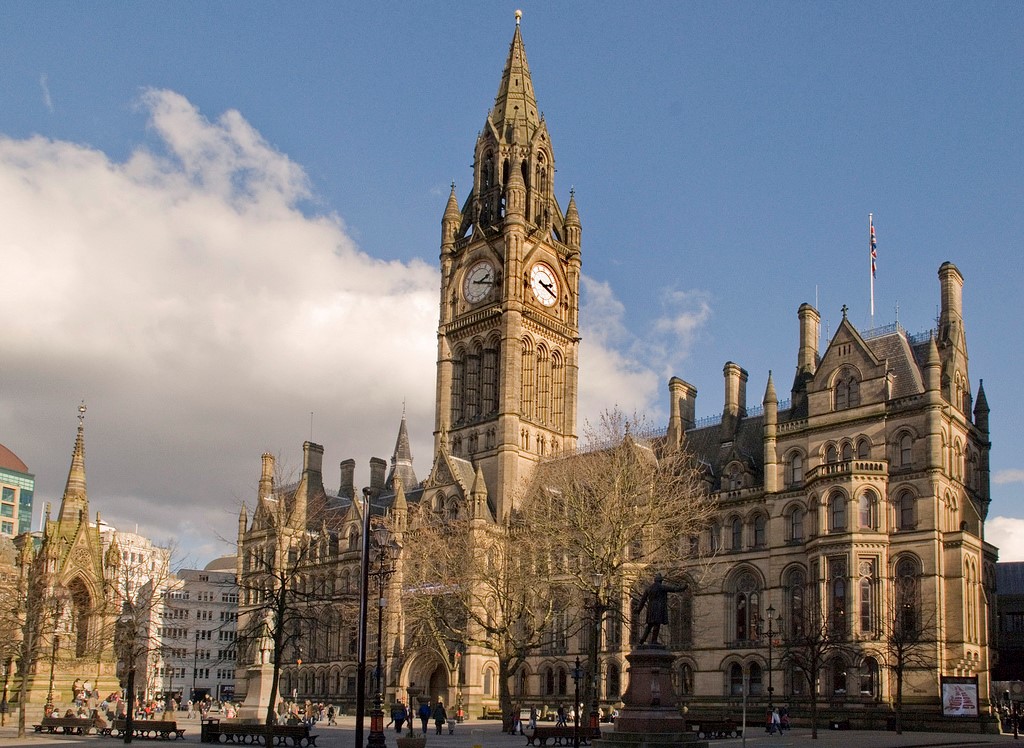 From industrial squalor to civic pride, the story behind some of the most impressive buildings of the North involve a unique mix of economics, grand designs and noble sentiments within communities.
From industrial squalor to civic pride, the story behind some of the most impressive buildings of the North involve a unique mix of economics, grand designs and noble sentiments within communities.
By 1850, England had become the first urban industrial nation with over 50 per cent of the population residing in towns and cities. Between 1800 and 1841, Sheffield doubled its population, Manchester tripled and Liverpool went from 80,000 to over 280,000.
Read more: The history of the great Victorian Town Halls of Northern England
You don’t have to be tech savvy to use the latest in AV
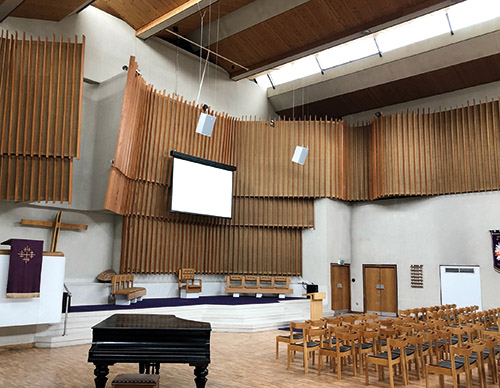 Broadmead Baptist Church in Bristol is built on the foundations of one of the country’s earliest Baptist churches. Now, the completion of a dynamic audio-visual installation by Creative Audio-Visual Solutions has led to the church being fully equipped for all the requirements and challenges of worship in the 21st century.
Broadmead Baptist Church in Bristol is built on the foundations of one of the country’s earliest Baptist churches. Now, the completion of a dynamic audio-visual installation by Creative Audio-Visual Solutions has led to the church being fully equipped for all the requirements and challenges of worship in the 21st century.
Read more: You don’t have to be tech savvy to use the latest in AV
Young people shun future visits to heritage attractions over coronavirus fears
 Research commissioned by specialist heritage insurer, Ecclesiastical, has revealed young people are less likely to visit heritage attractions in person once the lockdown lifts due to coronavirus fears. However, digital is a revenue opportunity for heritage attractions as two fifths (44%) of young adults who visited a heritage attraction online during lockdown said they would be willing to pay to access these if they were no longer free.
Research commissioned by specialist heritage insurer, Ecclesiastical, has revealed young people are less likely to visit heritage attractions in person once the lockdown lifts due to coronavirus fears. However, digital is a revenue opportunity for heritage attractions as two fifths (44%) of young adults who visited a heritage attraction online during lockdown said they would be willing to pay to access these if they were no longer free.
Read more: Young people shun future visits to heritage attractions over coronavirus fears
Craftsman resurrects old glass for The New Room
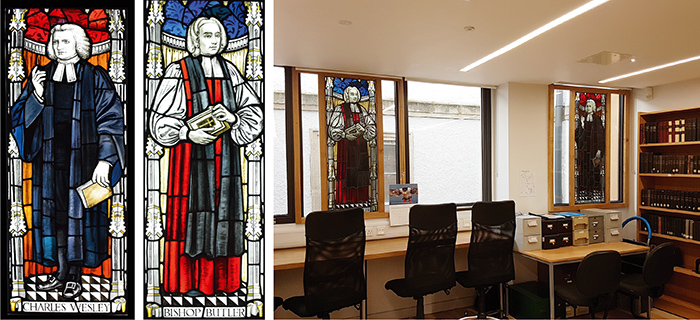 John Wesley’s Chapel in Bristol – known as The New Room – opened its doors in 1739 and is the oldest Methodist building in the world. It has been a place of worship, heritage and social action ever since.
John Wesley’s Chapel in Bristol – known as The New Room – opened its doors in 1739 and is the oldest Methodist building in the world. It has been a place of worship, heritage and social action ever since.
In 2017 a new visitor centre opened in the Horsefair courtyard next to it, featuring a café, shop, atrium, library and archive, meeting rooms and new offices – as well as a revamped 12-room museum above the existing chapel.
The true cost of an organ for your church
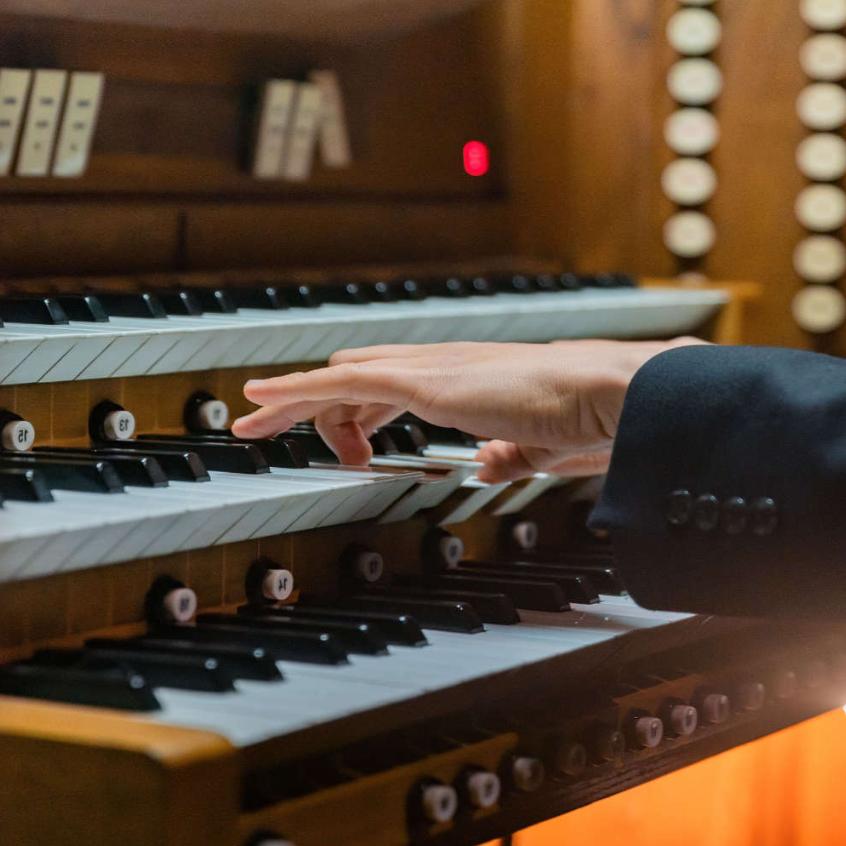 What is the true cost of an organ for your church? Questions to ask your organ company.
What is the true cost of an organ for your church? Questions to ask your organ company.
At Allen Organs we believe that the true cost of ownership should be considered when purchasing a new organ or considering a rebuild for your church.
Allen is unique in our industry because we do not consider any Allen Organ too old for maintenance. With over 300 Allen Organs over 50 years old now in regular use in the UK we invite all churches to consider not only the purchase price of a new organ or a re-build but also the long-term value for money for your church.
No cash? No problem! The future of giving is in the app
 Cash is losing relevance in society generally; and that presents both a problem and an opportunity for all churches: how can people give during the offering without it? That question led to the creation of Givt – an app designed for church and charity use to allow people to donate in all situations.
Cash is losing relevance in society generally; and that presents both a problem and an opportunity for all churches: how can people give during the offering without it? That question led to the creation of Givt – an app designed for church and charity use to allow people to donate in all situations.
COVID-19 has changed the way people interact with the church and has revealed a flaw in the majority of cashless solutions. Givers want to give, not pay, and give regardless of where they are. What is needed is a solution like Givt, which utilises a smart phone app for all donations. It allows people to give while watching an online service, or while sitting in the church building, on their phone – instantly. That allows churches to keep the ‘giving moment’, even when we are all apart.
Read more: No cash? No problem! The future of giving is in the app
Lightning protection: the new standard explained
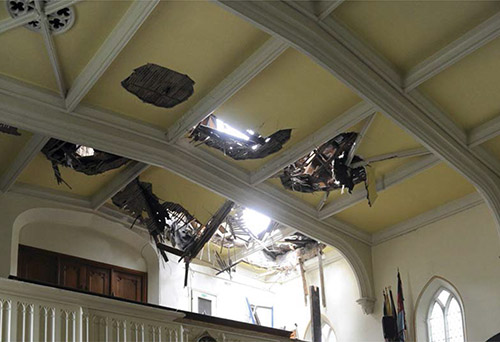 In May Historic England began a series of webinars aimed at providing technical guidance for owners and operators of historic buildings, as well as contractors and heritage professionals. Tagged as Technical Tuesdays, the webinars are presented by senior members of Historic England’s technical conservation team.
In May Historic England began a series of webinars aimed at providing technical guidance for owners and operators of historic buildings, as well as contractors and heritage professionals. Tagged as Technical Tuesdays, the webinars are presented by senior members of Historic England’s technical conservation team.
Each Tuesday in the week sees a webinar on a theme within a particular area of expertise. On 21 July the theme was Lightning Protection. It was presented by Historic England senior building services engineer Geraldine O’Farrell and the team leader of building services and principal engineer, Caroline Cattini.
ISCE rebrands to ISCVE – Institute of Sound, Communications & Visual Engineers
 ISCE has renamed and rebranded to ISCVE Ltd - The Institute of Sound, Communications and Visual Engineers.
ISCE has renamed and rebranded to ISCVE Ltd - The Institute of Sound, Communications and Visual Engineers.
Recognising the diversity of our members and the markets they operate in, along with the convergence of technologies, the Institute has undertaken this identity and name change to embrace the wider scope, skills and sectors of its members and supporting members.
Read more: ISCE rebrands to ISCVE – Institute of Sound, Communications & Visual Engineers
Renovation completed against the elements
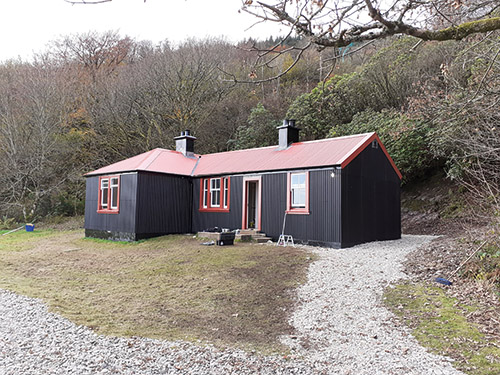 Houghtons of York were appointed as main contractor for an interesting renovation project on the west coast of Scotland. Cul Na Shee, a Landmark Trust property is located in the small village of Saddell, Kintyre, about a 25 minute drive from Campbletown. The only access is through a narrow archway at Saddell Castle followed by a rough track, and finally a 60m walk along a picturesque gravel beach.
Houghtons of York were appointed as main contractor for an interesting renovation project on the west coast of Scotland. Cul Na Shee, a Landmark Trust property is located in the small village of Saddell, Kintyre, about a 25 minute drive from Campbletown. The only access is through a narrow archway at Saddell Castle followed by a rough track, and finally a 60m walk along a picturesque gravel beach.
While this makes for a lovely approach to the property it made delivery of materials to site a rather tricky process, with large delivery trucks needing to be unloaded into a small van for the track before being carried by hand along the beach.













